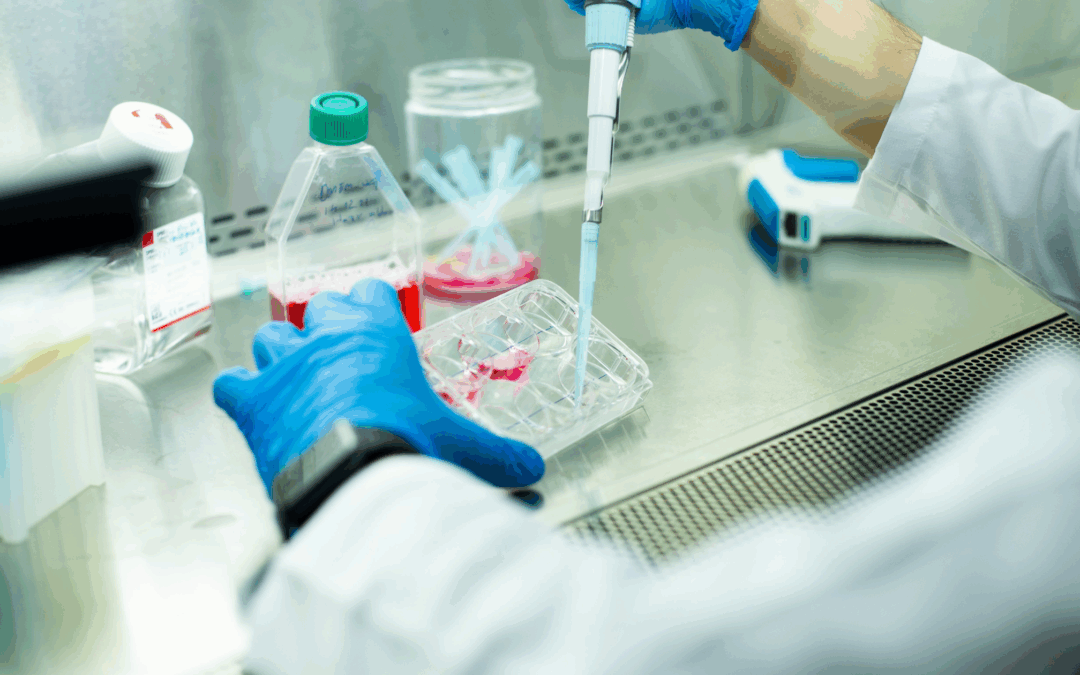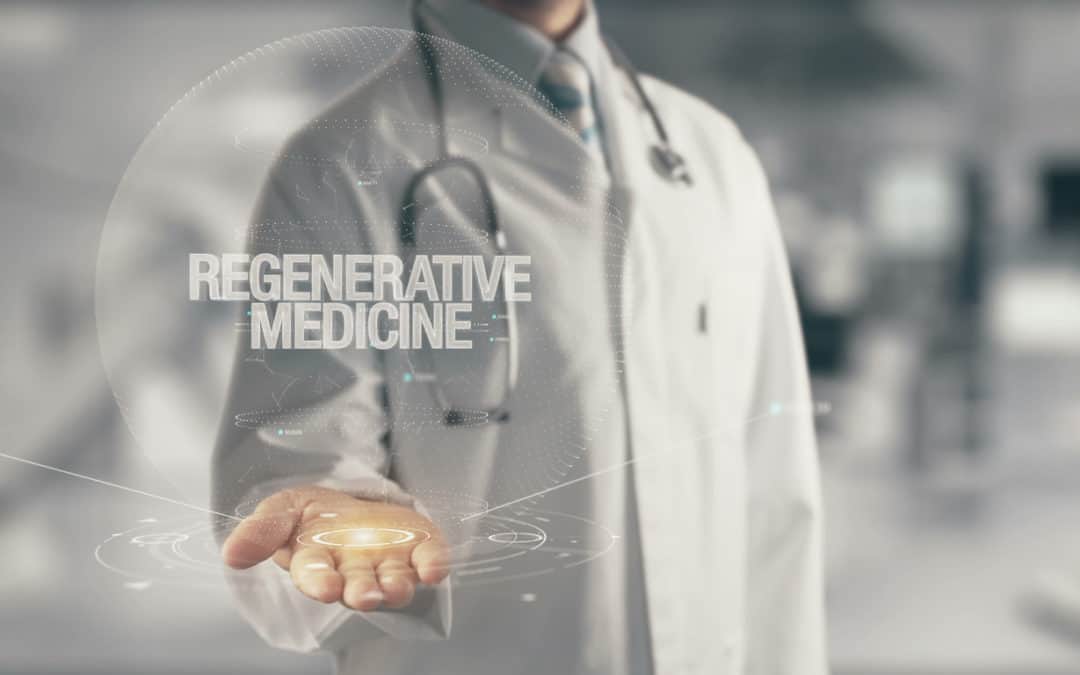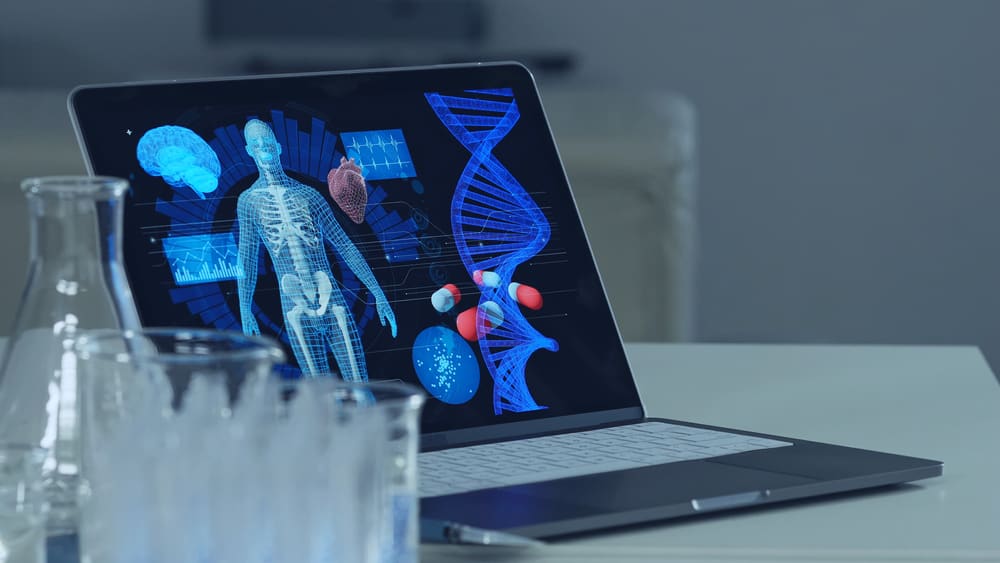
Jun 18, 2025
Regenerative medicine has emerged as a groundbreaking frontier in healthcare, offering hope to those suffering from chronic pain, degenerative conditions, and tissue injuries. This field harnesses the body’s natural healing abilities to restore or replace damaged tissues, reduce inflammation, and improve function. From platelet-rich plasma (PRP) therapy to stem cell treatments, regenerative therapies are transforming how we approach recovery and long-term wellness.
But not everyone is an ideal candidate. Understanding whether regenerative medicine is right for you is crucial to getting the best results. If you’ve been considering this innovative approach, here are five signs you might be a good candidate for regenerative medicine treatments.
Signs You Are a Good Candidate for Regenerative Medicine Treatments
1. You Have a Musculoskeletal Injury or Chronic Joint Pain
Regenerative medicine has shown particular promise in treating orthopedic conditions, especially those involving joints, tendons, ligaments, and cartilage. Whether it’s a sports injury like a torn meniscus or rotator cuff, or chronic issues such as osteoarthritis, regenerative therapies can help repair damaged tissues and reduce inflammation.
If you’ve been struggling with:
- Knee, shoulder, or hip pain
- Tendonitis or bursitis
- Cartilage degeneration
- Minor ligament tears
…you may be a strong candidate for treatments like stem cell therapy or PRP injections. These approaches aim to accelerate the body’s natural healing process, potentially helping you avoid invasive surgery or long-term use of pain medications.
Bonus Tip: If you’re in the early to moderate stages of arthritis or injury, you’re more likely to benefit from regenerative treatments than if your joint is severely damaged or completely worn down.
2. Conservative Treatments Haven’t Worked
If you’ve already tried physical therapy, rest, steroid injections, and anti-inflammatory medications without success, regenerative medicine may be your next step. Many patients turn to regenerative therapies when they reach a plateau in traditional treatment or want to avoid more aggressive interventions like surgery.
Patients often choose regenerative medicine because:
- They want a more natural approach to healing.
- They are looking for a longer-term solution instead of a temporary fix.
- They’ve exhausted other non-surgical methods without lasting relief.
It’s important to understand that regenerative treatments are not a quick fix. They work by stimulating the body’s healing mechanisms, which may take weeks or even months to show full results. But for many, the wait is worth the long-term improvement.
3. You’re in Generally Good Health
Your overall health plays a significant role in determining whether regenerative medicine will be effective. While these therapies are minimally invasive and low-risk, your body needs to be in a relatively good state to respond optimally to treatment.
Ideal candidates typically:
- Are not smokers or are willing to quit (smoking impairs healing).
- Are not severely overweight or are actively working on weight management.
- Have stable blood sugar levels (uncontrolled diabetes can interfere with cell healing).
- Are free from active infections or cancer.
Good health doesn’t mean you have to be an elite athlete—it just means your body can efficiently participate in the healing process. If you’re not sure whether your health status qualifies, a qualified regenerative medicine specialist can help evaluate your risk factors and determine the safest approach.
4. You Want to Avoid Surgery
Surgery isn’t always the best or most desirable option, especially when it comes with extended downtime, risks, and unpredictable outcomes. Regenerative medicine appeals to many people because it offers a non-surgical alternative that may still provide meaningful relief and functional improvement.
If you’re considering surgery but:
- Want to try a less invasive option first
- Need to avoid lengthy recovery due to work or lifestyle
- Have already had one surgery and don’t want another
- Have been told you’re not an ideal surgical candidate
…then regenerative therapies may be an appropriate avenue to explore.
For example, some patients with degenerative disc disease or mild meniscus tears can avoid or delay surgery through stem cell or PRP treatments, which aim to reduce pain and improve mobility naturally. While not a guaranteed substitute for surgery, these therapies may help manage symptoms and extend the life of your joints or tissues.
5. You’re Committed to a Holistic Recovery Process
Regenerative medicine is part of a bigger picture—one that includes lifestyle, nutrition, physical therapy, and patient mindset. The most successful outcomes often come from individuals who are proactive, disciplined, and patient.
Ask yourself:
- Are you willing to follow post-treatment care recommendations?
- Will you commit to physical therapy or exercise as advised?
- Are you open to dietary or behavioral changes that support healing?
- Do you have realistic expectations about gradual improvement?
These treatments are not magic bullets. They’re catalysts for your body’s natural healing systems, and that process takes time and effort. Being engaged and proactive in your care significantly increases your chances of a positive outcome.
A Final Thought: Not Everyone is a Candidate—And That’s Okay
Regenerative medicine is not a one-size-fits-all solution. While it holds exciting promise for many, there are circumstances where it might not be the best choice. Severe joint deformities, complete tissue loss, or advanced systemic diseases may limit the effectiveness of these therapies.
That’s why a comprehensive evaluation with a regenerative medicine specialist is critical. A qualified provider will assess your medical history, imaging, lifestyle, and goals to determine whether you’re likely to benefit—and they won’t recommend it unless they genuinely believe it can help you.
Conclusion
Regenerative medicine offers a path toward healing that emphasizes the body’s innate ability to recover, repair, and rejuvenate. If you’re dealing with persistent joint or tendon issues, have tried conservative treatments without success, are in good overall health, and are motivated to avoid surgery through a more natural and holistic route, you might be an excellent candidate.
The best first step? Schedule a consultation with a trusted provider specializing in regenerative therapies at San Diego Orthobiologics Medical Group. With a personalized evaluation and guidance, you can discover whether this innovative treatment could be the breakthrough your body has been waiting for.
Interested in learning more about regenerative medicine?
Our clinic offers in-depth assessments and cutting-edge regenerative therapies tailored to your needs. Contact us today to book a consultation and take the next step toward lasting relief and better function—naturally.

Feb 19, 2021
Regenerative medicine is a field in medicine that develops methods to regrow, repair, or replace damaged diseased cells, tissues or organs. It utilizes the body’s natural healing processes to rebuild damaged tissues and heal injuries. In the field of orthopedics, regenerative medicine holds great promise for helping patients with injuries or degeneration involving the musculoskeletal system.
Damage to the joints, ligaments, tendons, or discs can lead to chronic pain in various parts of the body including:
- Lower Back
- Knees
- Hips
- Neck
- Feet and ankles
- Hands and wrists
- Elbows and Shoulders
Regenerative medicine addresses the reason for the pain by helping to heal and create new healthy tissues.
How Does it Work?
Regenerative treatments for orthopedic conditions use the patient’s own blood and tissues from bone marrow or fat to kick-start the body’s own healing processes. These cells are removed from the patient and concentrated to isolate the healing proteins, molecules, and nutrients they contain. These super-healers are then re-injected into the site of damaged tissue to encourage new cell growth and healing.
The U.S. Food & Drug Administration (FDA) does not allow the use of embryonic cells or birth tissue products for treating orthopedic conditions. However regenerative medicine physicians can use FDA-compliant autologous cellular products to treat musculoskeletal problems.
These autologous cell therapies include:
- Platelet Rich Plasma: Platelets in the patient’s own blood release growth factors and proteins that promote tissue repair, while the plasma carries the hormones, electrolytes and nutrients required to nourish cells during the healing process.
- Cell Based Therapies: Adult Stem Cells taken from the patient’s own fat tissue (adipose) or bone marrow have the unique ability to develop into the specific kind of cell needed and possess molecules that direct other cells in the injured area to form new blood vessels, awaken other stem cells and encourage newly forming cells to produce collagen and other proteins essential for creating new healthy tissues.
Prolotherapy (Proliferative Therapy) is a Regenerative injection using natural medications, specifically dextrose, that help the body jump-start its own natural healing response when injected into the injured area.
Is Regenerative Medicine Painful?
For many years, patients with unresolved chronic orthopedic pain were left to consider surgery as their last option and best hope for long-term pain relief. But with advancements in regenerative medicine, these patients can avoid major surgery and lengthy rehabilitation.
Regenerative treatments are injection procedures and unlike surgery, they do not involve the pain or risk of large surgical incisions. Blood, bone marrow, or fat tissue is collected, processed, and injected into injured tissue on the same day. These procedures are typically performed on an out-patient basis and recovery begins at home within hours of the treatment.
Ask the Right Questions, Get the Best Results
When considering regenerative medicine treatments, it is important that you do your research in selecting a physician that is highly skilled and experienced in regenerative medicine. The following are questions that you need to ask before making your decision. Patients get the best outcomes when the answer is “yes” to all these questions.
- Is the physician board-certified and specializes in diagnosing and treating orthopedic conditions? Examples include Physical Medicine and Rehabilitation, Sports Medicine, Orthopedics, Pain Management physicians.
- Do you use appropriate, advanced, FDA-compliant devices in the preparation of the cellular products that can deliver the best results?
- Are the treatments performed using imaging guidance to ensure precise delivery of the regenerative products to the site of the injury?
- Is the practice compliant with FDA regulations?
- Do you track your outcomes and present them at medical conferences or publish them in medical journals?
Drs. Christopher J. Rogers and Mary A. Ambach of San Diego Orthobiologics Medical Group together have successfully treated thousands of patients with PRP and cell-based treatments for more than three decades. They are published authors and stem cell researchers. Their facility in Carlsbad contains the most advanced Regenerative Medicine technology in San Diego and offers same-day treatments with the highest level of safety and efficacy

Nov 27, 2020
Regenerative treatments use the body’s own unique healing properties to alleviate painful orthopedic conditions and address the underlying cause of the pain.
Regenerative medicine has the potential to repair or replace tissues damaged by age, disease or trauma. It can be used to treat a number of orthopedic conditions including the following:
- Bursitis
- Carpal Tunnel Syndrome
- Disc Degeneration and Tears
- Golfer’s Elbow and Tennis Elbow
- Herniated Discs
- Osteoarthritis of the knees, hips, back, shoulders and neck
- Plantar Fasciitis
- Tendon Tears and Tendinitis
How Do Regenerative Treatments Work?
The body is a finely tuned machine. Like any piece of machinery, it will send a signal when something is not working correctly. When a gasket fails on an engine and leaks oil, this leak is a signal that there is a problem. In the same way, when a body part fails, the body sends a signal to indicate there is a problem. Typically, it does this through the sensation of pain.
Regenerative treatments use the patient’s own cells in the form of platelet rich plasma or healing cells derived from fat tissue or bone marrow, to heal the underlying cause of the pain. These cellular products are referred to as Orthobiologics.
How Do Orthobiologics Work?
- Platelet Rich Plasma: Platelets in the patient’s own blood release growth factors and proteins that promote tissue repair, while the plasma carries the hormones, electrolytes and nutrients required to nourish cells during the healing process.
- Cell Based Therapies: Healing cells taken from the patient’s own fat tissue (adipose) or bone marrow contain adult stem cells that have the unique ability to develop into the specific kind of cell needed by the body. They possess molecules that direct other cells in the injured area to form new blood vessels, awaken more stem cells and encourage production of proteins and other materials essential for creating new healthy tissues.
- Prolotherapy (Proliferative Therapy): Natural medications that help the body jump-start its own natural healing response are injected into the injured area.
Minimally Invasive Pain Relief for Orthopedic Conditions
Orthobiologic regenerative treatments are performed on an out-patient basis and do not require hospitalization or lengthy rehabilitation. The healing cells are obtained from the patient through a needle or small cannula and are returned to the injured site on the same day.
Experienced, reputable practitioners of regenerative medicine follow the U.S Food and Drug Administration (FDA) guidelines for the performance of these procedures and follow strict protocols to ensure safety and efficacy. Patients considering regenerative treatments should seek the expertise of board certified-physicians who are specialized in diagnosing and treating orthopedic conditions. They have the regenerative medicine skills and experience necessary to promote safety, comfort and a successful outcome.
Drs. Christopher J. Rogers and Mary A. Ambach of San Diego Orthobiologics Medical Group together have successfully treated thousands of patients with cell-based therapies for more than three decades. They are board-certified in Physical Medicine and Rehabilitation. As published authors and stem cell researchers, they were chosen to participate in a first of its kind, FDA-approved clinical trial to treat knee osteoarthritis. The SDOMG facility in Carlsbad contains the most advanced Regenerative Medicine technology in San Diego and offers same day treatments with the highest level of safety, efficacy and patient satisfaction.

Oct 23, 2020
Regenerative medicine represents a complete breakthrough in modern medicine. The body’s ability to heal itself naturally is actually not a new thing. A fractured bone will regrow and heal the break. Cut yourself shaving, and the skin will heal. There are many examples of our body’s innate ability to heal injuries.
Now modern science and technology are now enabling physicians to help their patients discover new ways in which the body can heal itself. Within the specialty of orthopedics, regenerative medicine is offering healing and pain relief to patients who suffer from conditions such as osteoarthritis, herniated discs or ligaments and tendons injuries.
Orthobiologics Can Boost the Body’s Own Natural Healing Abilities
Orthobiologics are cells and substances derived from cells that are naturally found in your body. By concentrating them and delivering them to the site of injury, they can help speed up the healing process.
Here’s how it works:
When you injure a bone, muscle or tendon, the platelet cells in the blood are the first responders arriving on the scene to quickly start healing. White blood cells also rush to the injury site to ward off infection, control inflammation and become the clean-up crew [i]. Other important cells like stem cells participate in this complex symphony of repair. Specialists in orthopedic regenerative medicine can now boost these natural processes through several specialized treatments that help maximize the body’s own innate healing capabilities.
Regenerative Treatments for Orthopedic Conditions
There are different orthobiologic treatments that your regenerative medicine specialist can recommend depending on your orthopedic condition:
· Platelet Rich Plasma puts the healing properties of the patient’s own blood to work to repair damaged joints, tendons and muscles. The platelets in the blood release growth factors and proteins that promote tissue repair, while the plasma carries the hormones, electrolytes and nutrients required to nourish cells during the healing process. PRP treatments are customized to the particular individual and their injury in order to be most effective.
· Cell based therapies use cells derived from the patient’s own bone marrow or adipose (fat) tissue. These cells include adult stem cells and many other healing cells. They produce molecules that direct neighboring cells in the area to form new blood vessels, decrease inflammation and encourage formation of new healthy tissues. Stem cells are special cells that have the unique ability to develop into the specific kind of cell needed, whether that be a tendon, ligament, cartilage or bone cell. Skilled regenerative medicine practitioners use highly specialized processes to prepare these cells that are then delivered directly to the injured area to stimulate healing.
· Prolotherapy (Proliferative Therapy) uses dextrose and other natural substances that are injected into a chronically injured ligament, tendon, nerves or joint in order to help the body jump-start its own natural healing response.
Beware of Imposters
As regenerative treatments have become more widely recognized for their ability to address orthopedic conditions and the chronic pain associated with it, more and more clinics are trying to get in on the action.
If you are considering regenerative treatments for pain related to osteoarthritis, tennis elbow, degenerative discs in the spine or other conditions, you should perform due diligence on the clinic that offers it. The source, processing and delivery of the regenerative materials are critical to the success of the treatment.
Currently, the U.S. Food and Drug Administration (FDA) does not allow the use of stem cells derived from birth tissue products (amniotic fluid and tissue, umbilical cord blood) to treat orthopedic conditions because these donor products have not been proven to be safe or effective. Our board-certified specialists only use your own cells (autologous) to treat orthopedic conditions.
Maximizing the effectiveness of these treatments requires a state-of-the-art facility and equipment, as well as knowledge and experience in fluoroscopic (x-ray) or ultrasound guidance to ensure targeted delivery of the healing cells to the injured area.
Orthobiologic treatments that capitalize on the body’s own natural healing abilities is one of the most exciting opportunities in modern medicine to address and resolve the chronic pain associated with orthopedic conditions that affects millions of Americans.
Drs. Christopher J. Rogers and Mary A. Ambach of San Diego Orthobiologics Medical Group together have successfully treated thousands of patients with cell based therapies for more than three decades. They are published authors and cell therapy researchers. Their facility in Carlsbad contains the most advanced Regenerative Medicine technology in San Diego and offers same day treatments with the highest level of safety and efficacy.
[i] https://www.aarp.org/health/alternative-medicine/info-11-2008/super_healing.html
[ii] https://orthoinfo.aaos.org/en/treatment/helping-fractures-heal-orthobiologics/

Sep 25, 2020
What are Exosomes?
Exosomes are microscopic bubbles packed full of proteins and genetic material such as DNA and RNA. When released from cells they allow those cells to communicate with each other. The molecules and genetic material direct cell behavior such as cell growth or differentiation.
In the past decade, interest in exosomes has exploded for several reasons. First, they allow communication between cells and aid in tissue repair and regeneration. Second, they have been proposed to be useful vehicles for drugs and could be used as therapeutic agents. Third, they can be useful biomarkers of disease which aids in diagnoses and prognosis.
What is the difference between Exosomes and Stem Cells?
Stem cells are living things that have the ability to renew themselves and to turn into different kinds of cells. They contain thousands of molecules known to decrease inflammation, regenerate tissue and fight infection. Exosomes are substances secreted by all cells, including stem cells.
During the repair process, different kinds of cells or molecules are needed at the different stages of healing. The stem cells act like the conductor in an orchestra, directing cells where to go and what to do. They organize the complex symphony of cellular activity that leads to tissue healing. Different types of exosomes are produced by the stem cells and released at different times depending upon the needs of the body.
Can we use manufactured products that contain exosomes to treat orthopedic conditions?
There are currently no FDA approved exosome products. These products require FDA approval before they can be marketed for use in patients. Their safety and efficacy have not yet been proven. Although they have the potential to repair injuries and regenerate tissues, there is still much to be learned about their behavior in the body. Patients should avoid exosomes until research studies prove they are safe and effective.
Sources:
https://bmcbiol.biomedcentral.com/articles/10.1186/s12915-016-0268-z
https://www.fda.gov/vaccines-blood-biologics/consumers-biologics/consumer-alert-regenerative-medicine-products-including-stem-cells-and-exosomes
https://www.sciencedirect.com/science/article/abs/pii/S1931524418300070




